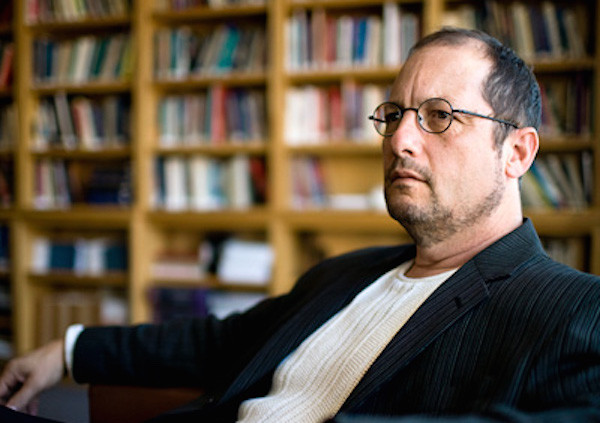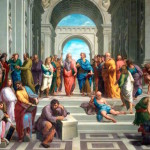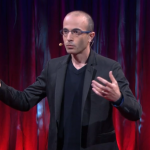Bart Ehrman’s Botched Source
by Jimmy Akin
Filed under History

Atheist scholar Bart Ehrman is a smart guy, but he sometimes handles his sources in the most frustrating and misleading manner.
For example, in his 2012 book Did Jesus Exist?: The Historical Argument for Jesus of Nazareth (where he is on the right side for once), he writes:
Several significant studies of literacy have appeared in recent years showing just how low literacy rates were in antiquity.
The most frequently cited study is by Columbia professor William Harris in a book titled Ancient Literacy (footnote 6).
By thoroughly examining all the surviving evidence, Harris draws the compelling though surprising conclusion that in the very best of times in the ancient world, only about 10 percent of the population could read at all and possibly copy out writing on a page.
Far fewer than this, of course, could compose a sentence, let alone a story, let alone an entire book.
And who were the people in this 10 percent?
They were the upper-class elite who had the time, money, and leisure to afford an education.
This is not an apt description of Jesus’s disciples. They were not upper-crust aristocrats.
In Roman Palestine the situation was even bleaker.
The most thorough examination of literacy in Palestine is by a professor of Jewish studies at the University of London, Catherine Hezser, who shows that in the days of Jesus probably only 3 percent of Jews in Palestine were literate (footnote 7).
Once again, these would be the people who could read and maybe write their names and copy words. Far fewer could compose sentences, paragraphs, chapters, and books.
And once again, these would have been the urban elites (Did Jesus Exist?: The Historical Argument for Jesus of Nazareth, 47-48).
The issue here is not the level of literacy in the ancient world or in Roman Palestine—it was, from the evidence we have, startlingly low.
The issue is the claim he makes about Catherine Hezser.
It’s true that she published a very thorough examination of literacy in Palestine (i.e., her book Jewish Literacy in Roman Palestine).
But did she “[show] that in the days of Jesus probably only 3 percent of Jews in Palestine were literate,” where literacy is defined as the very limited ability to “read and maybe write their names and copy words”?
It would be nice to look up what Hezser said on the matter, but when you look at Ehrman’s footnote, all you find is this:
7. Catherine Hezser, Jewish Literacy in Roman Palestine (Tübingen: Mohr Siebeck, 2001).
No page number. No chapter number. Just a gesture at the whole book.
Okay, well, if you look in Hezser’s book, there is a chapter called “Degrees and Distribution of Literacy,” which is also the very last chapter in the book.
That’s exactly the kind of chapter that would present her final conclusions regarding the degree of literacy among Jews in Roman Palestine.
And, indeed, when we turn to the beginning of that chapter, we find Hezser writing:
Although the exact literacy rate amongst ancient Jews cannot be determined, Meir Bar-Ilan’s suggestion that the Jewish literacy rate must have been lower than the literacy rate amongst Romans in the first centuries C.E. seems very plausible.
Whether the average literacy rate amongst Palestinian Jews was only 3 percent, as Bar-Ilan has reckoned,(footnote 1) or slightly higher, must ultimately remain open.
The question naturally depends on what one understands by “literacy.” If “literacy is determined as the ability to read documents, letters and “simple” literary texts in at least one language and to write more than one’s signature itself, it is quite reasonable to assume that the Jewish literacy rate was well below the 10-15 percent (of the entire population, including women) which Harris has estimated for Roman society in imperial times.(footnote 2)
If by “literacy” we mean the ability to read a few words and sentences and to write one’s own signature only, Jews probably came closer to the Roman average rate.
Whereas exact numbers can neither be verified nor falsified and are therefore of little historical value, for the following reasons the average Jewish literacy rate (of whatever degree) must be considered to have been lower than the average Roman rate (Jewish Literacy in Roman Palestine, 496).
Gah!
You see the multiple ways Ehrman has misrepresented Hezser:
- Whereas Ehrman said she “shows that in the days of Jesus probably only 3 percent of Jews in Palestine were literate,” but what she actually says is that “the exact literacy rate amongst ancient Jews cannot be determined,” that the question “must ultimately remain open,” and that “exact numbers can neither be verified nor falsified and are therefore of little historical value”!
- Ehrman presents the 3 percent figure as representing Hezser’s own findings (she “shows” it as a result of her study), but she indicates that the figure isn’t hers and that she got the figure from Meir Bar-Ilan.
- Her own conclusion is that the figure might be 3 percent “or slightly higher” but is unknowable.
- Finally, whereas Ehrman said the 3 percent figure represented only limited literacy—the ability to read and write your name and maybe copy words—Hezser indicates that the 3 percent represented a broader form of literacy, with “the ability to read documents, letters and ‘simple’ literary texts.”
- By contrast, Hezser says that if only low-level literacy is meant (“the ability to read a few words and sentences and to write one’s own signature only”) then—contra Ehrman—the number was higher and “Jews probably came closer to the Roman average rate” of 10-15 percent!
So Ehrman has completely botched this source and misrepresented what Hezser said.
Why?
Presumably because at some point in the past he encountered the 3 percent reference in her book and it stuck in his mind. That’s about all he remembered, though.
When it came time to write his own book, he didn’t look up the reference in Hezser (thus explaining the absence of a page number) and mentally reconstructed what he thought she had said.
If he was being more careful, Ehrman would have looked up what Hezser wrote and either represented her accurately and/or (even better) looked up Bar-Ilan’s paper and gone directly to the source of the estimate.
I don’t want to be too hard on Ehrman, because anybody can botch a source (and everybody does from time to time—and precisely because of fuzzy memories), but this is not the only time I’ve found Ehrman misrepresenting verifiable facts—something we may look at further in future posts.
By the way, Hezser does give a specific citation to Bar-Ilan’s estimate of ancient Jewish literacy.
His paper is online here if you care to read it.
If you like the information I've presented here, you should join my Secret Information Club.
If you're not familiar with it, the Secret Information Club is a free service that I operate by email.
I send out information on a variety of fascinating topics connected with the Catholic faith.
In fact, the very first thing you’ll get if you sign up is information about what Pope Benedict said about the book of Revelation.
He had a lot of interesting things to say!
If you’d like to find out what they are, just sign up at www.SecretInfoClub.com or use this handy sign-up form:
Just email me at jimmy@secretinfoclub.com if you have any difficulty.
In the meantime, what do you think?
Related Posts
Note: Our goal is to cultivate serious and respectful dialogue. While it's OK to disagree—even encouraged!—any snarky, offensive, or off-topic comments will be deleted. Before commenting please read the Commenting Rules and Tips. If you're having trouble commenting, read the Commenting Instructions.












